Raffles Place
Originally known as Commercial Square, Raffles Place was designated as the business district of Singapore by Sir Stamford Raffles in 1822. Originally a swampy area, a hill had to be levelled to fill and construct the square.
The proximity of Commercial Square to the harbour at Collyer Quay and the Singapore River – the lifeline of Singapore’s entrepôt trade – gave rise to banks, trading agencies, shops, godowns (warehouses) and offices around the square. The imposing buildings of these commercial establishments lent an air of affluence and distinction to the area.
Raffles Place and its surrounding areas have undergone tremendous change over time. However, it remains the heart of Singapore’s financial district.

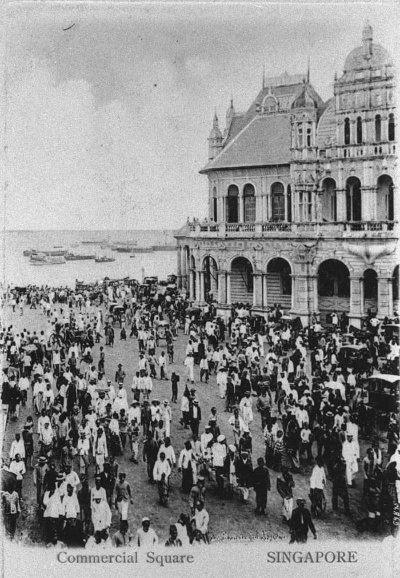
Fullerton Square, 1900s
Fullerton Square was a busy thoroughfare that connected Collyer Quay – once the landing point for ships to unload and store their goods, and for passengers to disembark – to Commercial Square (later known as Raffles Place), the business hub of early Singapore. The Hongkong and Shanghai Bank building is visible on the right.
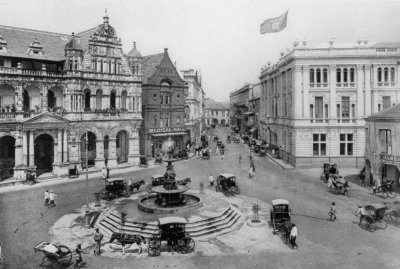
Fullerton Square and Battery Road, c. 1900
Seen here is the Tan Kim Seng Fountain at Fullerton Square. The Victorian-style structure was built in 1882 to commemorate the prominent merchant and philanthropist’s contributions to Singapore’s waterworks. Leading away from the fountain is Battery Road, which connected Collyer Quay to Commercial Square, making it one of the busiest streets in Singapore in the 19th and early 20th centuries.
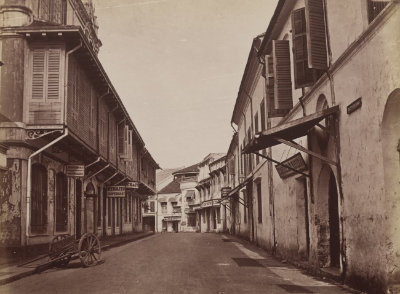
Battery Road, 1880s
The mercantile community on Battery Road was made up of mainly European merchants and traders. In the late 19th century and early 20th century, the street was lined with three-storey and four-storey buildings that housed shops, offices, warehouses and banks.
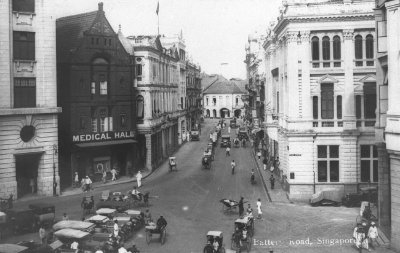
Battery Road, 1920s
The Medical Hall, as seen on the left, was a landmark at the corner of Fullerton Square and Battery road for many years. It was also known as the Red House because of its red brick façade. Like many of the early dispensaries in Singapore, Medical Hall was opened by European doctors, in this case, by German doctor Christopher Trebing in the 1870s. The building was demolished in 1970.
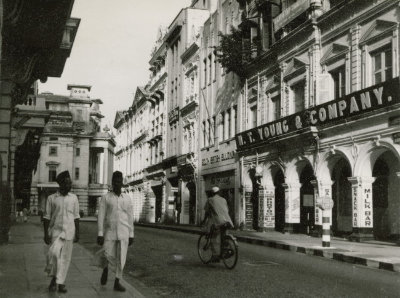
Battery Road in the evening, 1954
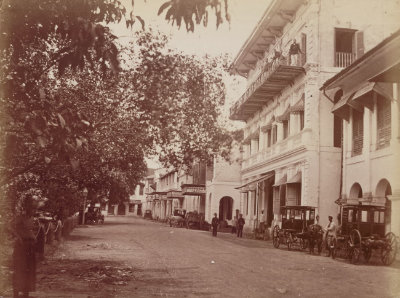
Raffles Place, 1880s
Originally known as Commercial Square, Raffles Place was designated as a business centre for the mercantile community by Sir Stamford Raffles in 1822. It was renamed Raffles Place in 1858 to commemorate his contributions.

Raffles Place, 1920s
In the early 20th century, Raffles Place was a bustling commercial area with never-ceasing traffic, bordered by imposing buildings that housed banks, offices and department stores. Seen here is the Chartered Bank building in the centre and the façade of John Little, the oldest department store in Singapore, on the right.

Raffles Place seen from Chartered Bank, 1920s
The square of Raffles Place was originally a garden before it was turned into a carpark in the early 1900s, with the Mercantile Bank building located on its southern end. On the right of the image stands the Raffles Chambers, with its distinctive statue of Eros that adorned its façade. Built in 1912 to house the retail store of Katz Brothers, it would go on to become the home of leading local department store, Robinsons & Co., which moved into the building in 1941.
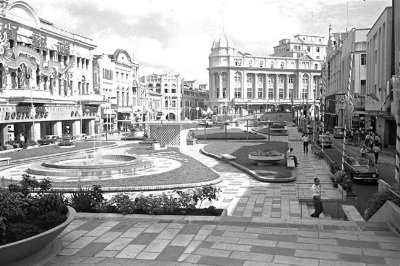
Raffles Place, 1966
Following the completion of an underground carpark at Raffles Place by 1965, the open-air carpark was transformed into a park featuring fountains and a giant flower clock. In the 1980s, the underground carpark was demolished to make way for the Raffles Place underground train station.

